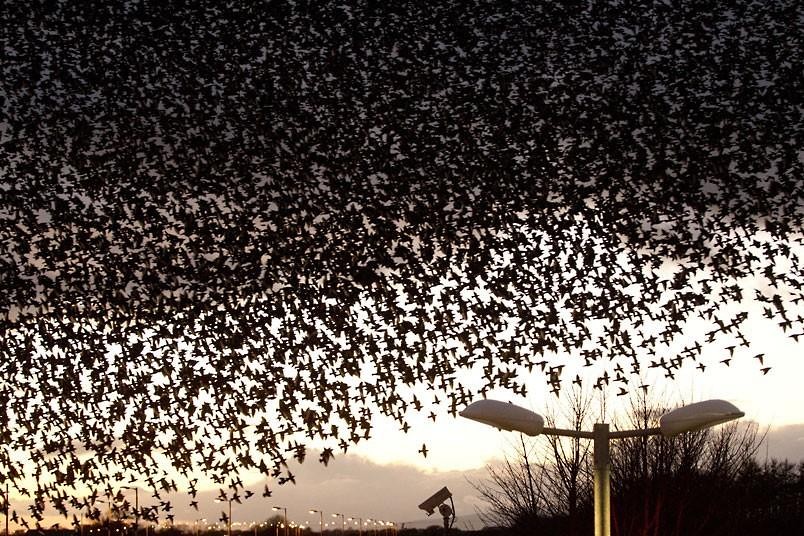When William Bartram traveled through the south from 1773-1776 he observed many environments that today are either extinct or very rare. In southern Alabama just east of Mobile he journeyed through a grove of dogwoods and magnolias that was 9 miles long. This is how he described it.
“We now enter a very remarkable grove of Dog wood trees (Cornus florida) which continuing nine or ten miles unalterable, except here and there a towering Magnolia grandifloria; the land on which they stand is an exact level; the surface a shallow, loose, black mould, on a stratum of stiff, yellowish clay; these trees were about twelve feet high, spreading horizontally; their limbs meeting and interlocking with each other, formed one vast, shady, cool grove, so dense and humid as to exclude the sun beams at noon-day. This admirable grove by the way of eminence has acquired the name of the Dog woods.”
The existence of an almost pure stand of dogwoods this large has long puzzled me. Dogwood is a common understory tree throughout the south but I’m unaware of any natural location where it largely dominates as a canopy species. Recently, I reread the passage, and the next morning I had a eureka moment–I believe passenger pigeon flocks created this unusually large stand of dominant dogwood trees. The dogwood grove Bartram observed was likely the site of a massive passenger pigeon roost 50-100 years before he traveled through it. Flocks of migrating passenger pigeons (Ectopistes migratorius) formerly caused eclipses of the sun lasting for 6 hours, and when they roosted their colonies would so damage the forest it would appear as if a tornado had struck. The weight of the roosting birds would bust limbs and even crack enormous tree trunks in half. The dung overfertilized the trees, often killing all of them. These enormous colonies covered many square miles. This explains the extent of Bartram’s dogwood grove.
Dogwood trees were already common in the understory of the forest, and the fruit ripens in the fall…exactly when passenger pigeons migrated to the south after nesting in the midwestern states. It seems likely passenger pigeons fed on the dogwood and magnolia berries in the surrounding forest, and deposited the still viable seeds under their roosts in their dung. Dogwood trees sprouted in the nutrient rich soil and thrived in the open sunlight created when the overstory trees were destroyed by the passenger pigeons.
Bartram’s dogwood grove was probably located in Conecuh County, Alabama.
Passenger pigeon migrations eclipsed the sun.
Bartram describes adjacent open plains that also resemble a landscape recovering from a passenger pigeon invasion. Most of the 70 mile forest surrounding the dogwood grove consisted of oak, hickory, black walnut, elm, sourwood, sweetgum, beech, scarlet maple, buckeye, and black locust with an understory of dogwood, crabapple, and plum. (Chestnut and pine grew on rocky hills.) But some pockets of treeless plains within the forest and alongside the dogwood grove were composed of shrubs covered in grape vines. The shrubs included silver bud, buckeye, bignonia, azalea, and honeysuckle.
Dogwood berries. Passenger pigeons ate them. They taste bittersweet to me.
Flowering dogwood. Bartram’s dogwood grove must have been beautiful during early March when the tree blooms.
I’ve always wondered how forests recovered following an invasion of passenger pigeons. It didn’t occur to me until just recently that Bartram had described just such a site, though he was unaware of how the landscape he described originated. In summary I shall list the lines of evidence for my hypothesis that Bartram’s dogwood grove was the result of a massive passenger pigeon roost 50-100 years earlier.
- The size of the site (9 miles in extent) is the same size as many passenger pigeon roosts described by colonists.
- Heavily fertilized soils support monocultures. The site, fertilized by pigeon dung, supports just 1 dominant species with 1 minor component.
- From Bartram’s description all of the dogwood trees appear to be the same age, suggesting they all germinated during the same year.
- Passenger pigeons arrived in the region when dogwood trees bear fruit. This makes my hypothesis plausible because passenger pigeons are the only species that could have planted dogwood seeds on such a large scale.
- Adjacent areas also appear to be recovering from a passenger pigeon invasion. Bartram describes pockets of plains where there are no overstory trees, just shade intolerant shrubs covered in grape vines.
- The complete absence of overstory trees indicates a sudden traumatic tree-killing event in the recent past
Tags: 9 mile long dogwood grove in Alabama, passenger pigeons, William Bartram




July 12, 2018 at 2:18 pm |
Absolutly love that you and yours..are ‘watchers..and wonderers’! Make sure that all family members, extended family and children and grandchildren..keep up the ethos..of what you do!! Here..looking at 95 to 100 in the Willamette valley of Oregon. Again..travel well..and report-back.
July 13, 2018 at 1:18 pm |
Fascinating!
December 17, 2020 at 7:05 pm |
Very interesting suggestion. I knew a very little about Passenger Pigeons, but hadn’t considered the consequence of their roostings.
And it may interest you to learn of an old, natural “vineyard” that formerly existed in Missouri and Arkansas that might have been another Pigeon Roost.
http://bulbnrose.x10.mx/Heredity/MuenchGrapes1881.html
December 17, 2020 at 9:15 pm |
Thanks for the link.
July 27, 2023 at 11:44 am |
Reblogged this on GeorgiaBeforePeople and commented:
I first published this article in July of 2018. It has just 70 views. I’m proud of my hypothesis. I proposed the 9-mile-long forest of dogwood and magnolia that Bartram encountered in 1776 was created by a passenger pigeon roost.